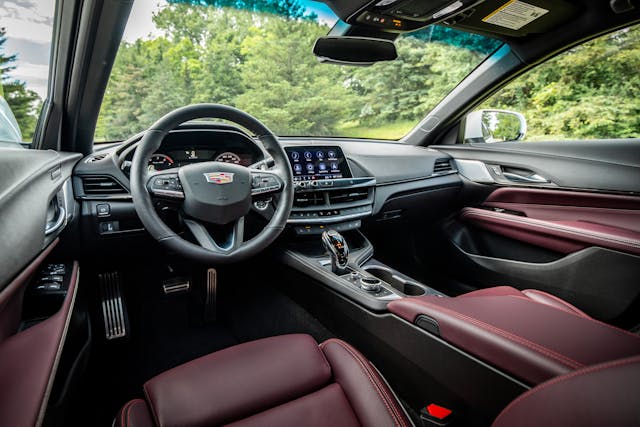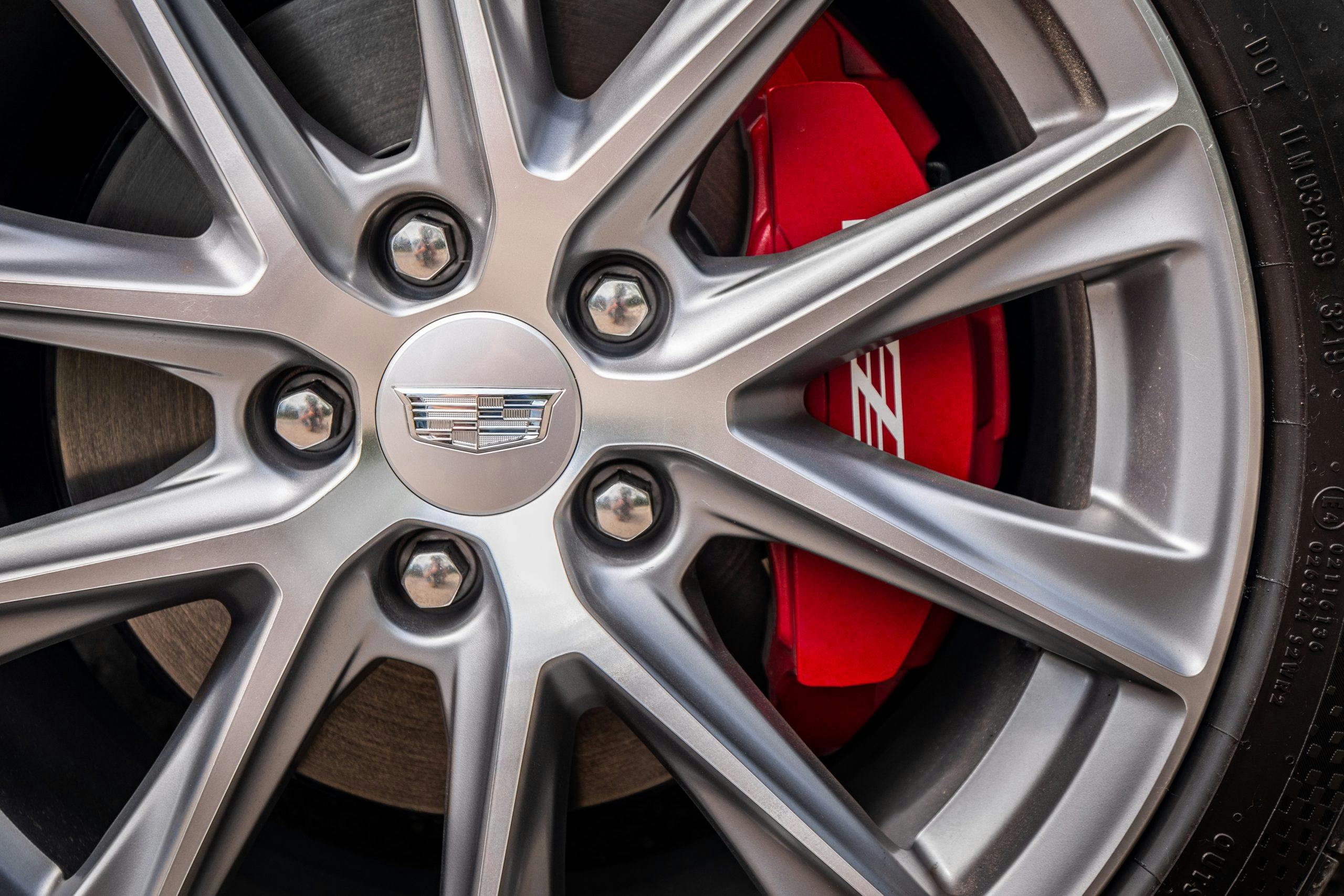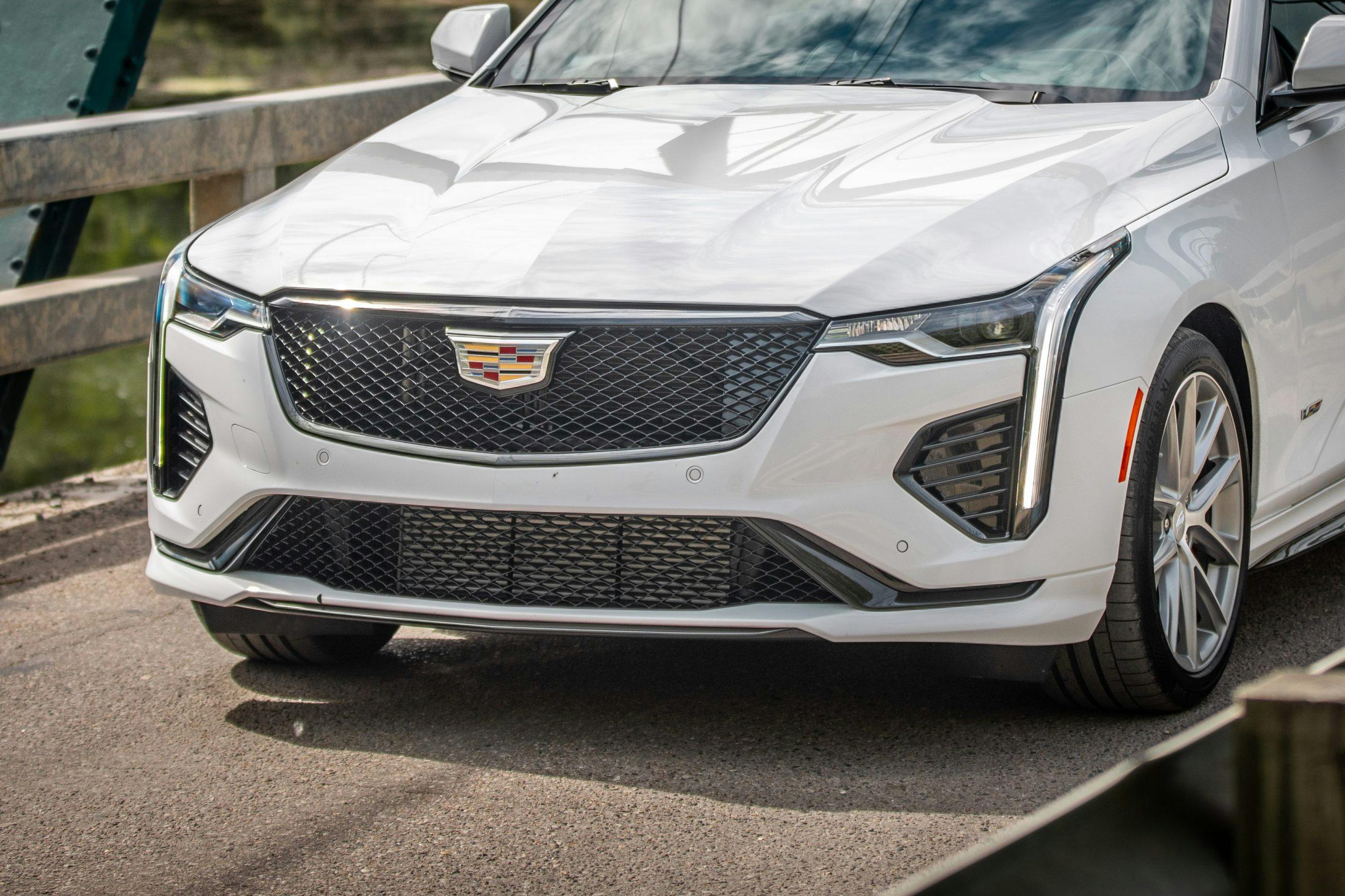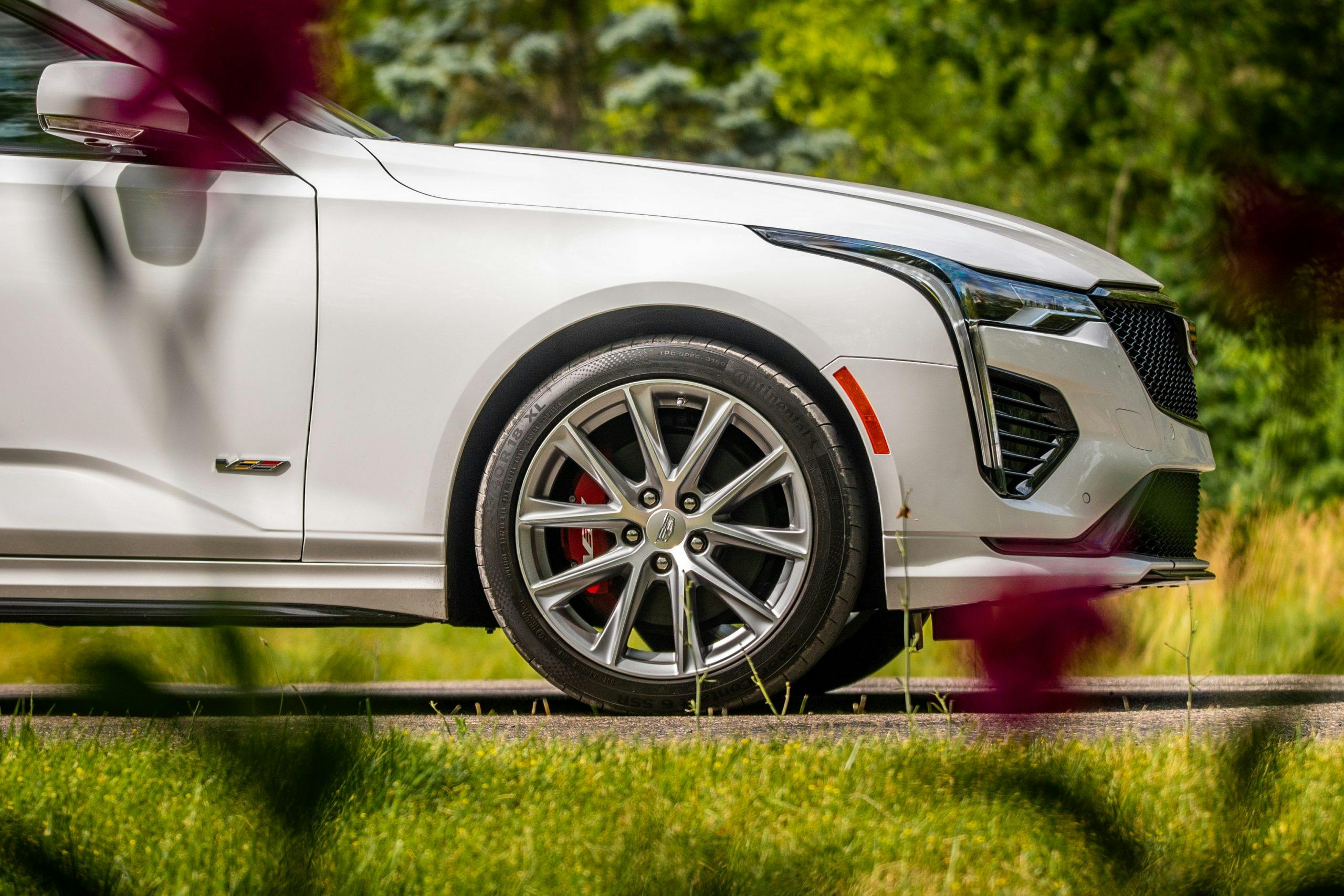Media | Articles
Review: 2020 Cadillac CT4-V
What’s the opposite of the Love Boat? The HATE TANK! What’s the opposite of the BMW Cimarron, aka M235i Gran Coupe? Why, it’s the Cadillac 320i, aka the CT4-V! That’s right! Billy Butler Yeats never saw a world like 2020, where the Bimmers lack all longitudinally-mounted conviction and the Cadillacs are full of passionate 2.7 Turbo intensity!
All kidding aside, if you’re in the market for a $45,000 kinda-sorta-performance sedan you now have two remarkably strange choices available. BMW will sell you an M235i Gran Coupe, which is basically a front-wheel-drive Mini Clubman with BMW styling and tack-on all-wheel-drive. It is to the Mini as the Cimarron was to the Oldsmobile Firenza, if you recall either of those cars. Meanwhile, Cadillac has a bespoke rear-wheel-drive platform with a great chassis, worse-than-lackluster styling, and an engine to infuriate the faithful. In other words, it’s a 1.8-liter “320i Sport” from 1981 or thereabouts.
These are cheap cars by modern standards—a Mustang Bullitt, which will rip the lungs out of either vehicle previously discussed but which is not exactly what you’d call “upwardly mobile,” costs almost exactly as much with the same equipment—and they have to be, since modern buyers would much rather have a two-row entry-luxury SUV even if they have to pay more to get one. So both BMW and Cadillac have decided to make a value play. Of the two, the CT4-V is the driver’s choice. Let’s take a look.
Our test car, a RWD Summit White CT4-V with “Sangria” interior and a few options, stickered for $50,685. In many ways, this is the old Cadillac ATS, rear-wheel-drive platform relative to the current Camaro, given some freshening and a confusing new model lineup. CT4 models start at $34,500 for a two-liter four-cylinder and go up to $46,000 for the V-Series. There’s no use even attempting to disambiguate Cadillac’s various uses of “V” and “V-Series” here. What’s important to know is that the old ATS-V was a 464-horsepower twin-turbo V-6 barn-burner with an available six-speed manual, while the CT4-V has a 320-horse turbo four (borrowed, rather ignominiously, from the Silverado truck) with a mandatory 10-speed automatic and optional all-wheel drive.

Opinions will vary regarding the exterior styling and its, ahem, unusual rear trunk contours, but it’s safe to say that you’re better off sitting in the CT4-V looking out than you would be sitting somewhere else looking in. This is doubly true since Cadillac has finally cracked the code on a proper entry-luxury interior. The details are worth mentioning: an instrument-panel center LCD screen of such high quality that the words and numbers look painted on, even in direct sunlight. Metallic buttons with engraved logos. Expensive-looking satin finishes on the vinyl and leather. The burgundy leather seats, a $1,000 option, even have matched-color fabric side panels for where they might rub the center console during adjustment.
Marketplace
Buy and sell classics with confidence
This kind of attention was beyond the capabilities of General Motors just five years ago. Now it’s available on the cheapest Cadillac. Owners of modern Lincolns, particularly if those Lincolns are Black Label models, won’t be impressed — but if you’ve just gotten out of a CLA Benz or 3-series BMW, you’re going to take notice.
Our test car had no sunroof, an equipment choice which says “M3 Lightweight” in a BMW but conveys “Alamo/Budget” in a Cadillac. We know from experience that headroom can be tight in the ATS. Make sure you sit in a sunroof-equipped car before agreeing to buy one.
Cadillac is a little embarrassed about the trucky provenance of the big-bore four-banger—you’ll search in vain for the phrase “four-cylinder” on the window sticker or in the marketing materials. They just call it a “2.7 Turbo.” That’s okay. Having charmless engines is a modern Cadillac tradition, unless you spring for something with an LS or a Blackwing, and the 2.7 Turbo upholds that tradition with considerable vigor. Directly before driving the CT4-V, I’d been running errands in my 2014 Accord V-6. On paper, the Honda has fifty-two fewer horsepower, but in actual use the “2.7 Turbo” feels gutless in comparison, not at all helped by a transmission that changes gears with the bovine deliberation of Marlon Brando in The Godfather. I hate to say it, but the M235i feels faster. Quite a bit faster. Numbers and powertrain layout be dammed.

Nor does the Cadillac speak with the cultured voice of a Honda J35. Heck, I’d be satisfied with the Dyson whoosh of the ATS-V. All you get is a vague grumble, followed by between two and two hundred gear changes, and then an indifferent shove in the back which lasts but a second or two before the low-revving four requires another shift. It occurs to me that the 5.3-liter L83 V-8 would fit in this car, deliver similar fuel economy, and completely transform the character of the vehicle, for an additional cost of perhaps $1500 (based on the price difference in the Silverado). With a V-8, this is the greatest cheap Cadillac of all time, and a direct headshot on every 3-Series car money can buy. Unfortunately for Cadillac dealers, GM appears more interested in imitating its German competition than in humiliating them. Oh well. Wouldn’t want the showrooms to get too crowded.

Happily, the chassis and brakes are much better than the engine. The phrase “world-class” doesn’t cut the mustard here, because the current “world class” is the clomp-and-crash ride-and-handling non-balance found in today’s Bimmers and Benzes, where small bumps are capable of puncturing your bladder but big waves in the pavement send the chassis into a three-second oscillation vacation. The CT4-V simply steers, stops, and rides better than anything else you can buy for the same money. Lincoln could take some notes of their own here, although Cadillac has the unassailable advantage of weight distribution thanks to the platform in question. No FWD car is going to have this kind of dynamic excellence. The M235i prototype I drove a while back didn’t come close.
The rest of the CT4-V is executed more or less in line with current Cadillac practice. The stereo is ho-hum at best; audiophiles will want to hold their noses and buy a front-wheel-drive Continental instead. Rear-seat room is non-existent, as it was in the first-generation CTS and STS. Everything appears to be screwed together very nicely, and all the panels line up, but the window sticker notes that China supplies fully nineteen percent of the car. Red brake calipers are a $595 option; this is ridiculous when Porsche does it, and doubly so here. The seats are all-day comfortable, at least in the front.
All of the above caveats (and compliments) should be viewed in light of the fact that real-world transaction prices on the CT4 should be considerably less than those of the competition. I continue to prefer, and recommend, the Lexus IS350 in the segment, even though this is the last year for that car. It offers a strong and characterful V-6, combined with machined-billet assembly quality and resale value. With that said, you’ll have a hard time getting an IS350 out of the showroom for under fifty grand. By contrast, given a friendly dealer and the right choice of options — the $1,000 leather package is a must, the brake calipers and lane-keeping system aren’t worth a penny — this CT4-V could be a $40,000 car. A Honda Accord Touring is thirty-seven grand, just to put that in perspective.
Last but not least, it’s certainly worth something that Cadillac continues to provide a bespoke RWD platform to buyers in this segment when the Germans have all given up and gone to commodity-spec FWD econo-layouts. Once again, I’m reminded of the 1981 320i. The faithful didn’t like the styling or the sluggish engine—but compared to a Cimarron, it was basically a 3.0 CSL. This CT4-V might be a little weird-looking, it might have Yeats’ “rough beast” for an engine, and it might have a badge that makes little to no sense, but it is definitely the enthusiast’s choice. Slouch on over to your local dealer and check it out.

2020 Cadillac CT4-V: $50,685 including destination.
Highs: Brilliant chassis, first-rate interior, great value.
Lows: The way it looks and the way the engine works.
Summary: Cadillac takes a shot at a V-badged value play, and largely succeeds.












































Hmm…sounds like that turbo engine needs a “tune”. The car can’t be that heavy and unless the engine has the rotational mass of a diesel bus engine, it should accelerate faster.
I wonder if the test car was still in the restricted ‘break-in’ mode. Redline is severely lowered and transmission is extraordinarily protective during the initial (500 I think) miles. You can actually see this on the tach. Post break-in, you can still see the car limit rpm during warm up. The redline actually changes on the tach as the vehicle warms. Drive mode matters too. Tour mode is quite restrictive compared to sport/track/V mode. My 23 is disappointing in tour, largely because it has learned that I tend to drive it like Grandma when simply commuting about. Put it in a different mode and it wakes right up. 0-60 in 4.5 is easily attained using launch control and manually shifting once torque falls off. Leave it in tour and let it shift at redline, which the computer seems to prefer, and you can see nearly a second added to that time. The ct4V is definitely a schizophrenic car.